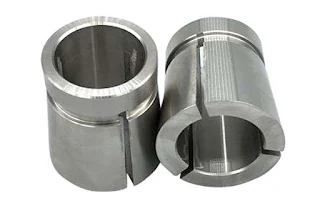Introduction
Definition and Significance of Automobile Mould
An automobile mould is a kind of industrial mould used to manufacture various components of automobiles. It serves as a crucial tool in the automotive manufacturing industry, playing a decisive role in the production process.
In the production of automobiles, the accuracy and quality of components are of utmost importance, and automobile moulds are the key determinants of these factors. For example, high - precision moulds can ensure that the produced automotive parts have precise sizes, such as the body panels with smooth surfaces and seamless fits, which not only improve the aesthetics of the vehicle but also enhance its aerodynamic performance. Precise mould - made parts like engine components can guarantee the stable operation of the engine, reducing fuel consumption and emissions. In addition, the use of high - quality moulds can improve production efficiency. With well - designed moulds, the manufacturing process can be automated and mass - produced, greatly shortening the production cycle. For instance, a modern automotive production line can produce hundreds of vehicles per day with the help of efficient moulds. Therefore, automobile moulds are the cornerstone of the automotive manufacturing industry, directly affecting the quality, cost, and production efficiency of automobiles.
Common Processing Technologies for Automobile Mould
CNC Machining
CNC (Computer Numerical Control) machining is a widely used technology in automobile mould manufacturing. It offers high precision and the ability to process complex shapes. With the precise control of computer - aided programs, CNC machines can achieve extremely accurate movements, and the machining accuracy can reach ±0.01 - 0.02 mm for general - purpose CNC machines, while high - end ones can even reach up to ±0.001 mm. For example, in the production of automobile moulds, CNC machining is often used to manufacture complex - shaped cores and cavities. When making the mould for a car door panel, the CNC machine can accurately carve out the intricate curves and shapes according to the design drawings, ensuring that the produced mould can form door panels with precise dimensions and smooth surfaces. Different types of CNC equipment also have different parameter characteristics. For instance, a three - axis CNC machining center is suitable for processing relatively simple three - dimensional mould parts, while a five - axis CNC machining center can handle more complex geometries from multiple angles, significantly improving the processing efficiency and quality of complex moulds.
Electrical Discharge Machining (EDM)
EDM, or Electrical Discharge Machining, works on the principle of using electrical discharges between an electrode and the workpiece in a dielectric fluid. These discharges generate intense heat, which melts and vaporizes small amounts of the workpiece material, gradually shaping it. This technology has unique advantages, especially when dealing with high - hardness materials and complex - shaped moulds. Since it does not rely on mechanical cutting forces, it can easily process materials such as hardened steel, which are difficult to machine by traditional methods. In the manufacturing of automobile engine moulds, EDM is often employed. The engine moulds usually have complex internal structures and high - precision requirements. EDM can accurately create the fine details and complex cavities of the engine moulds, ensuring the quality and performance of the engine components produced by these moulds.
Injection Molding
Injection molding is a key process for manufacturing plastic automobile mould components. The principle is to heat plastic materials to a molten state, inject them into a mold cavity under high pressure, and then cool and solidify them to form the desired shape. This method is highly efficient and suitable for large - scale production. For example, plastic components such as car interior trims, bumpers, and dashboard parts are often produced through injection molding. Different plastic materials have different injection - molding parameters. Here is a simple table showing some common plastic materials and their approximate injection - molding parameters:
Characteristics of Automobile Mould Processing Technology
High Precision Requirements
Automobile moulds demand extremely high precision. For example, in the production of plastic automotive components, according to the national standard GB/T 14486 - 2008 "Plastic Moulded Part Dimension Tolerances", for A - level precision injection - molded parts, the linear dimension tolerance range is ±0.1% - ±0.2%, and the angle tolerance is ±0.2° - ±0.3°. In the manufacturing of engine components with moulds, the dimensional tolerances of parts are often in the micron level. High - precision moulds ensure that the produced automotive parts fit precisely together. This not only improves the overall performance of the vehicle, such as enhancing the sealing performance of doors and windows, but also plays a crucial role in ensuring driving safety. If the precision of the mould is insufficient, it may lead to problems like air leakage in the vehicle, abnormal noise during driving, and in severe cases, affect the structural integrity of the vehicle.
Complex Shape and Structure
Automobile moulds often have complex shapes and structures. Take the automobile body panel mould as an example. The outer surface of the car body panel needs to meet strict aesthetic requirements, with smooth curves and complex shapes. The 3D design diagram of such a mould (as shown below) reveals its intricate structure. There are numerous curved surfaces, ribs, and complex features in the mould, which are designed to accurately form the corresponding parts of the car body panel. These complex structures require advanced processing technologies and high - level design capabilities to ensure that the final product meets the design requirements.
More What's the processing technology and characteristics of automobile mould?




